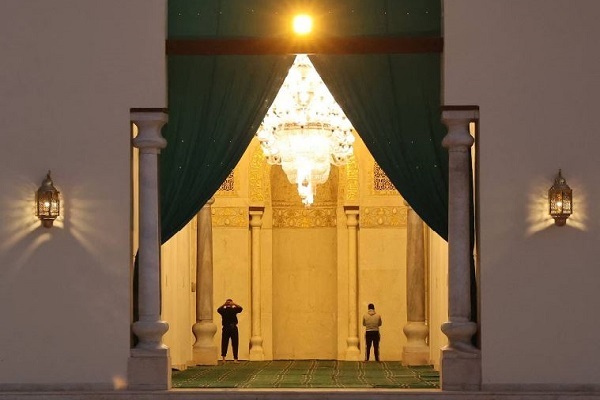AhlulBayt News Agency: Al Hakim bi Amr Allah Mosque has been reopened in the Egyptian capital of Cairo after going through renovations.
Work on Al Ḥakim bi Amr Allah Mosque included intricate restoration of the chandelier, facades and marble floors
A 1000-year-old Shia mosque in the heart of Cairo was reopened on Monday following extensive renovations.
Work on the Al Ḥakim bi Amr Allah Mosque began in 2017 and included repairs to water damage and cracks in its walls, according to Brig Gen Hisham Samir, a tourism and antiquities ministry official who spoke at the reopening.
Wooden fixtures, including the museum’s doors, its pulpit and the signature decorative wooden tiles that line the base of its ceilings, were bolstered.
The ornate chandeliers of the mosque, one of Cairo’s most prominent Fatimid sites, were also restored.
Security cameras were installed and a more efficient electrical grid to service both the indoor areas and the large courtyard that the mosque is known for.
Intricate restorations were also conducted on the mosque's facades and marble floors, Brig Gen Samir said.
Construction of the Al Ḥakim bi Amr Allah Mosque was started by caliph Al Aziz in 990AD. It was completed by his son Al Hakim, the sixth caliph of the Fatimid era, who named it after himself.
A 14th century earthquake destroyed a portion of the mosque. It was rebuilt over the centuries by several Egyptian Muslim leaders. It was also where Napoleon stationed some of his battalions during the 1798 French campaign in Egypt and Syria.
The Fatimid Caliphate was one of the most prominent Ismailite groups and the only Shiite group to ever rule Egypt. The caliphate was the ruling Islamic dynasty from the ninth to the 12th century.
The Fatimids ruled with Cairo as their capital and dozens of their relics remain.
/129
Work on Al Ḥakim bi Amr Allah Mosque included intricate restoration of the chandelier, facades and marble floors
A 1000-year-old Shia mosque in the heart of Cairo was reopened on Monday following extensive renovations.
Work on the Al Ḥakim bi Amr Allah Mosque began in 2017 and included repairs to water damage and cracks in its walls, according to Brig Gen Hisham Samir, a tourism and antiquities ministry official who spoke at the reopening.
Wooden fixtures, including the museum’s doors, its pulpit and the signature decorative wooden tiles that line the base of its ceilings, were bolstered.
The ornate chandeliers of the mosque, one of Cairo’s most prominent Fatimid sites, were also restored.
Security cameras were installed and a more efficient electrical grid to service both the indoor areas and the large courtyard that the mosque is known for.
Intricate restorations were also conducted on the mosque's facades and marble floors, Brig Gen Samir said.
Construction of the Al Ḥakim bi Amr Allah Mosque was started by caliph Al Aziz in 990AD. It was completed by his son Al Hakim, the sixth caliph of the Fatimid era, who named it after himself.
A 14th century earthquake destroyed a portion of the mosque. It was rebuilt over the centuries by several Egyptian Muslim leaders. It was also where Napoleon stationed some of his battalions during the 1798 French campaign in Egypt and Syria.
The Fatimid Caliphate was one of the most prominent Ismailite groups and the only Shiite group to ever rule Egypt. The caliphate was the ruling Islamic dynasty from the ninth to the 12th century.
The Fatimids ruled with Cairo as their capital and dozens of their relics remain.
/129

